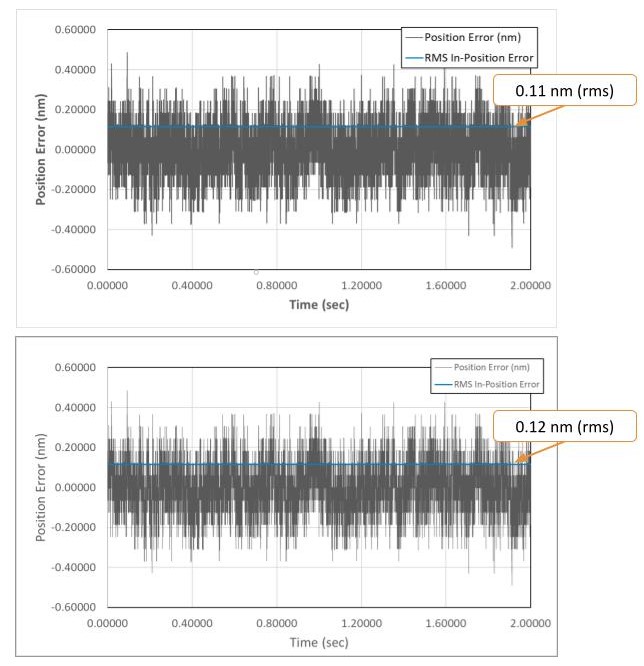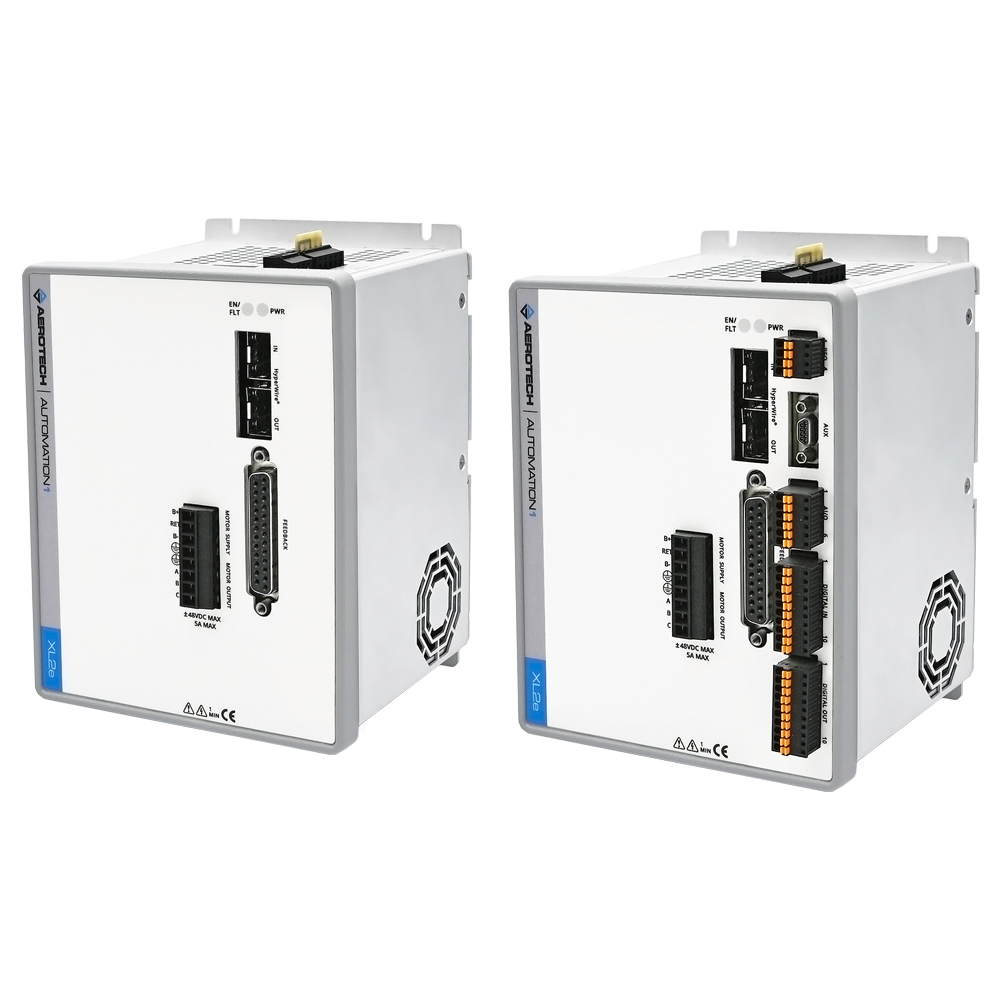Application Note, Motion Control Platforms
Application Note
Automation1 Linear Servo Drive Products Provide Industry-Leading In-Position Stability
Aerotech’s Automation1 linear amplifier products provide industry-leading in-position stability performance.
The Automation1 XR3 multi-axis drive rack can be configured with up to six individual XSL3 amplifiers. The Automation1 XL2e enhanced, compact linear servo drive is a single-axis version that uses similar technology. Both the XR3 with XSL3 amplifiers and the XL2e drive use low-noise linear power amplifiers combined with precision servo control technology to provide industry-leading in-position stability.
Each drive was tested by commanding a cross-roller bearing stage to maintain a standstill position using only the drive’s control loops (i.e., no external brake or other device assisted in maintaining position). The stage was horizontally mounted to vacuum rails on a granite table supported by air isolation. The position error was read by the stage’s 4 μm pitch amplified sine-wave encoder, multiplied by each drive’s feedback resolution multiplication circuitry. The root-mean-square (RMS) position measurement was calculated from the collected data. Figure 1 shows the test results for the XSL3 and XL2e, respectively.


Linear amplifiers have a unique advantage over PWM amplifiers in that they have no switching noise or amplifier deadtime. Therefore, they deliver high-precision position and velocity tracking, making linear amplifiers ideal for small step size and in-position stability applications. Linear amplifiers like the Automation1 XL2e (see Figure 2 below) also have the added benefit of reduced electromagnetic interference (EMI) noise due to the lack of PWM on/off amplifier switching. This feature makes linear amplifiers a desirable choice for many sensing and testing applications.


Summary
The innovative Automation1 precision machine and motion control platform offers several linear amplifier products. Figure 3 gives a quick summary of testing performed on the XL2e, XL5e and XSL3 linear amplifier products.
| Linear amplifier | In-position jitter, cross-roller bearing stage | In-position jitter, air bearing stage | Device type | Peak amplifier power dissipation per phase |
| XSL3 (XR3) | 0.11 nm, RMS | 0.6 nm, RMS | Slice amplifier for drive rack | 400 W |
| XL2e | 0.12 nm, RMS | 0.9 nm, RMS | Single-axis drive | 400 W |
| XL5e | – | 0.8 nm, RMS | Single-axis drive | 1200 W |

